After a few trains and an early start at 5:30am in Nara, we arrived in Hiroshima station at 11:30am. We stopped for a coffee to decide what to do and ended up having a donut… We are not getting fat at all as part of this trip! To get to our accommodation we took the street car which is basically a tram that runs across the city. We are staying at the World Friendship Centre, an NGO that was founded on August 6th, 1965 (exactly 20 years after the Atomic Bombing of Hiroshima), by Barbara Reynolds, to provide a place where people from many nations can meet, share their experiences and reflect on peace.
Once we arrived we were welcomed by Bernd, the current director (every two years new volunteers are chosen to look after the WFC) and his wife Maggie. We left our luggage, got some maps and went off to explore the Hijiyama hill – since we have decided to dedicate a full day tomorrow to the peace park. On the way there we stopped for lunch at Tosho, a pretty Japanese old school house where they serve Kaiseki menus and specialise in tofu. The food wasn’t that amazing, but still interesting, the best thing though is the view over a beautiful Japanese Zen garden with a
waterfall and fishes swimming In the pond. After lunch we continued to the Manga Library which has a small section with foreign mangas where I started reading Barefoot Gen, a manga that tells the story of an A-bomb survivor (who is also the author) across 8 volumes. It was recommended to me at the World Friendship Centre by Bernd and I ended up borrowing it in the evening since I couldn’t put it down. After the manga library, which is also an interesting building for its architecture, we had a nice walk in the park which is on a hill and overlooks the city. We then got to the modern art museum, and saw some great pieces by Yayoi Kusama (my favourite Japanese artist) and also some western such as Andy Warhol and Botero. Again the building’s architecture is very interesting, and so are the statues outside and the artworks inside.
After finishing we had a last walk in the park, where a few cats came
To say hello and made us miss our cat Jenks again. We then got a bus to the downtown area, where we walked along the main road called Handori, which is a covered arcade full of shops restaurant and bars, which we came to understand are very common in Japan. After all the culture we decide to do something a bit ignorant and stopped at a Taito building to play some games, after all it is a big part of the culture here (mainly of the teenagers but still). Our favourite is Tekken and we wanted to play against each other but
didn’t manage unfortunately. After some more walking we decided to stop for a beer and eventually food, and we had a nice steak and wine at a place called Meat Bar Fukuromachi! it was very busy and it was mainly locals which we liked, even though interestingly 99% of the clients were females!
Back to our “garden view” room at the WFC I continued reading my manga until I fell asleep on it.
Day 2 in Hiroshima
We started our day with a very nice breakfast at the WFC, which is included and tasty. The time is fixed at 8, and all the guests share the table and have a chance to interact. We met a lady from Germany, and two nice girls from Surrey, London. And of course we had a chance to speak more with Bernd and Maggie, and they told us the story of Barbara Reynolds, how she founded the centre while her husband came here for work, and how they then decided to travel the world with their three children.
In 1951, Mr Reynolds was sent by the Atomic Energy Commission to Hiroshima to conduct a study on the effects of radiation on children who had survived the first atomic bomb. Barbara and the family went with him and they all lived in the Army occupation base nearby. During their three years there, Barbara’s husband designed and built a yacht called Phoenix of Hiroshima on which they sailed around the world to protest nuclear weapons. During this trip her husband got arrested and had to spend three years in prison.
In the early 1960s, Barbara traveled around the world with atomic bomb survivors to show the world what nuclear can do, and why it humans cannot co-exist with nuclear weapons. She then established the World Friendship Center, devoting 13 years to it. Now the centre is looked after by American volunteers that come here to be in charge of the WFC for two years periods.
As part of our stay at the World Friendship Centre we got to meet an A-bomb survivor.
After breakfast we had an hour just the two of us with Soho-San, who was 5 years old when the bomb was dropped and he is now 75. It was amazing to hear his story, even though of course very shocking and sad. He told us how he was only 3km away from the hepicentre (hypecentre is on the floor, while epicenter is above as the bomb was detonated at 600metres above the ground. Hiroshima was an Uranium bomb while Nagasaki a plutonium one.) Soho showed us some shocking photos, of the city of Hiroshima before and after the bomb, he told us about the tests they were making on people to see the effects of the bomb, he told us how some of his family died in the impact and some with the after-effects – the most common of which are leukemia and cancer. He also spent some time talking about the present, and how it is very important to stop nuclear weapons and encourage people to do jobs that help other people, or help having a better planet such as eco-friendly businesses. He himself makes some very pretty pencils with the small branches of cherry trees, and he gave us one each as a present. He was telling us how he also suffered from cancer, and as an A-bomb survivor he gets free medical care and he needs to have regular check-ups to monitor his health. We felt very lucky and blessed to hear his testimony and to have met him and will be forever grateful to the World Friendship Centre for giving us this opportunity, and for the great work they do in creating new peace advocates, and in making everyone that stays here leave with a better knowledge and a high motivation in wanting the nuclear plants to be completely shut down across the planet. Bernd also shared some of his impressive knowledge, since in his past he was working in a nuclear station. He decided to stop after the chernobyl disaster, and he is here now to tell all the horrific things that uranium and other nuclear materials are doing in our beautiful world.
After one hour with Soho-San we then met Michiko at the peace park. Michiko is a board member of the World Friendship Centre and she does tours of the peace park for guests amongst many other responsibilities. We met her at 11am and she showed us around the peace park. We immediately got on well with her, she is such a great person, full of charisma, positive and with a contagious lovely laugh. She was a great guide, and we are very happy to have met her and grateful for her time with us!
We started by seeing some trees that survived the bomb, they were moved from their position to here, soon after the bomb, to help bring hope to people, if a tree can resist, they could resist and start blooming again. The other trees of the park have been donated by other prefectures to Hiroshima, to send wishes and support after the A-bomb horror. The park is now a peaceful and beautiful place, we were lucky we saw it on a sunny day, but I was surprised and amazed that it didn’t make me feel only sad, but also hopeful. It’s admirable how they managed to make it a place to remember, but also a place to get inspired and motivated to bring more peace to this planet, and to abolish nuclear weapons and plants.
Michiko than showed us a lot of monuments, amongst which we saw the memorial for the Koreans that died in the A-bomb, which were over 50 thousand, as they were forced to come to Japan during the war to help with the workforce, building weapons, agriculture and any other hard work that they were needed to do.
She also told us a bit more about the Japan-Korea relations, and how they were really bad in the past and are still not great. We then saw the A-bomb dome, that survived the bomb and that they decided to keep (even if there were controversial opinions about keeping it or not). My favourite was the monument to remember the children that died from the atomic bomb, this is represented through the story of one of them, Sadako Sasami. Sadako was 2 years old when the atomic bomb was dropped on August 6 1945 at 8:15am near her home in Hiroshima. She survived on that day, but later in 1954, when Sadako was 12, she was diagnosed with leukemia from the bomb radiation. They told her she had a year to live, and instead of getting depressed, Sadako spent her time in a nursing home folding origami paper cranes with the aim of making a thousand of them. She was inspired to do so by the Japanese legend that one who created a thousand origami cranes would be granted a wish. Her wish was to live. There are different versions, but the most realistic is that she finished the thousand and kept going. Her wish unfortunately didn’t come true, and she died one year later. Since that day, people from over the world, and her friends and family after she died, keep sending origami paper cranes every year on the anniversary of the A-bomb, or they bring them here when they come to visit.
We walked and walked along the park with Michiko, she also made us ring the bell that encourages to abolish nuclear – everyone that comes here needs to ring the bell.
We had a nice Okonomayaki lunch, and luckily we convinced Michiko to stay with us and we had a lovely lunch with her. We said goodbye, and a million thank yous which I also say here, and we went to visit the museum which was also very educational and sad.
After that we walked back to the WFC and unfortunately couldn’t find Maggie and Bernd to say goodbye, but we had to rush to get to Miyajima where we are staying for a couple of nights. If you read this, we’d like to say once again thank you for sharing all your knowledge, and for making our stay in Hiroshima so special. We will send our friends here, and forever remember the work you do and keep doing! Until next time, enjoy the spring and keep spreading peace 🙂
Hiroshima station was quite busy when we got there but luckily we managed to get to the JR ticket station and change our tickets for our return to Tokyo on Friday since somehow we got them wrong! After this chore we made our way to the Miyajima peer through the Sanyo line. I got us out on the wrong stop, which delayed us a bit. We got on the ferry just after sunset, and had nice views of Miyajima and the famous Torii Gate. We then walked towards our ryokan (Japanese guesthouse) and stopped for dinner as we learnt that here everything closes very early. We ate at one of the very few open restaurants, called Bambino where we had tapas style western dishes including delicious serrano ham, and for the joy of Bruce, JERK chicken!
We then got to our place, a lovely ryokan called Miyajima Mikuniya with a big common room with sofas, piano, guitar and all sorts, and a nice kitchen with also free laundry which was a right touch!
We had to make our tatami futon beds on the floor in proper Japanese style, but our room was so nice with a very big window at the front overlooking the beautiful garden which is the home of a couple of cheeky deers and two raccoons! Also for our joy there was a nice Furo (Japanese style bath tub) which took all of our stress from the journey away, and was a great way to end the day.
Miyajima
Our only day in Miyajima, and there was torrential rain for the whole entire day! We spent the day relaxing for a change, planning a bit of our South America trip which is getting closer and admiring the rain from our gigantic window. We met a nice couple from Toulouse during breakfast who just retired and decided to come to Japan for two months to learn the Sciatsu practice and eventually open one at their home when they get back, what a nice project! We also met the owner’s cat Miku which made us miss Jenkins a lot! We ventured out for lunch, had a look at the shrine and gate, and tried the Eel which is a delicacy here, as well as the famous Momiji Manju, maple biscuits with bean paste in the middle that you can find in every corner of the little island, some shops have mini factory-like machines where you can see them in the make. Definitely recommend trying one when still warm!
In the evening we found a nice spot for our last dinner in Japan – we are so sad to be leaving already it’s gone so quickly! We had some nice mixed skewers and Bonito sashimi (which we found out later is a mackerel type fish) and I ended with a tasty chocolate cake while Bruce went for ribs as dessert! Brucey also tried a weird soda drink with ginger that is very popular here called Marukin Miyajima Cider.
On our last morning we had an early start, breakfast and check out. We left our Lonely Planet since we won’t use it anymore and we can’t carry extra weight, and we were for one last time witness of the great Japanese kindness as they gave us origami pretty papers as presents, and two packs of my all-time favourite GREEN TEA KITKAT! Did they read my mind? An amazing send off, thank you!
Then ferry, then tube to Hiroshima station, then 2 shinkansen (Hiroshima-OSaka + Osaka – Tokyo) then one Narita airport express, then 10 hours flight to Sydney! So sad to leave Japan, we had the best time… but the tragedy is made less bad by the excitement of getting to Oz!
ARIGATO GOSAIMASU JAPAN!
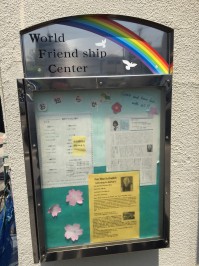
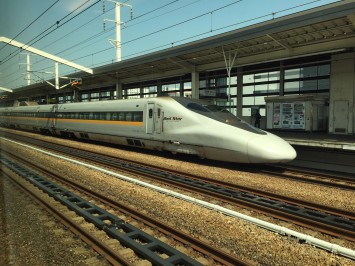
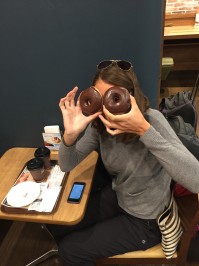
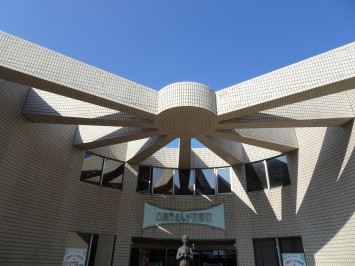
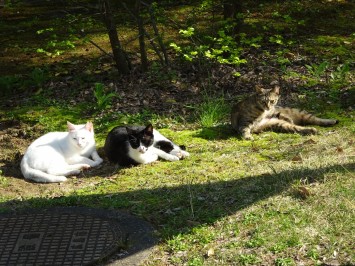
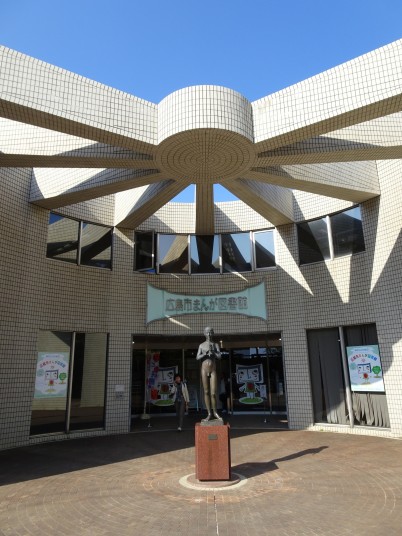
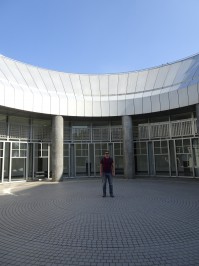
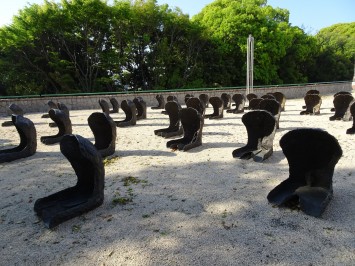
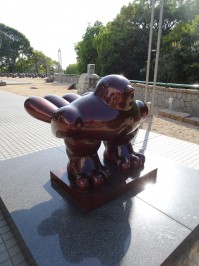
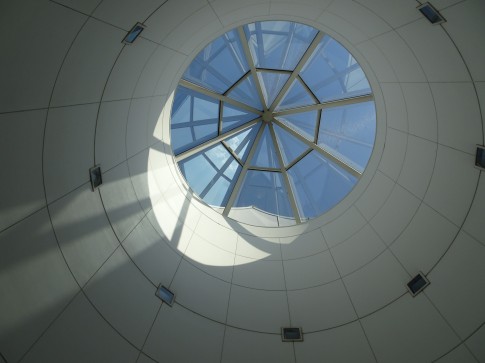
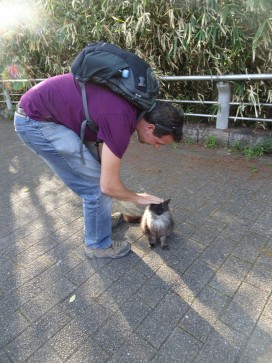
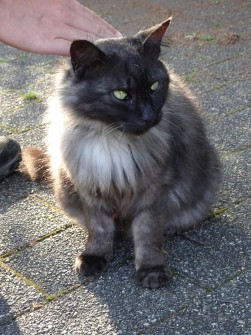
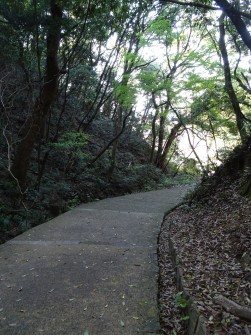
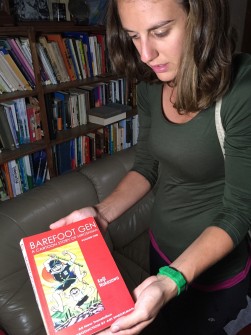
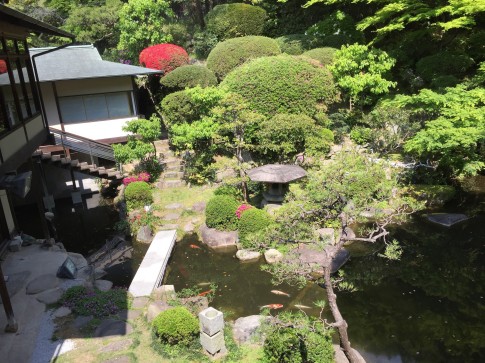
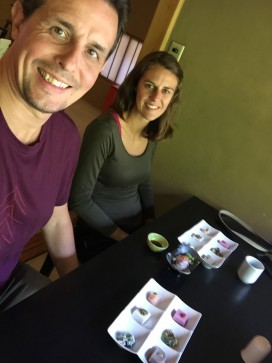
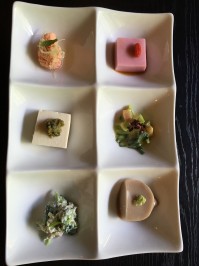
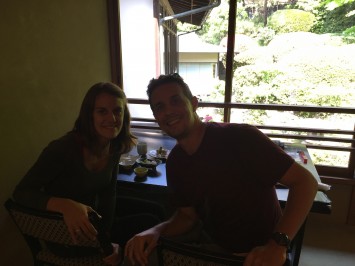
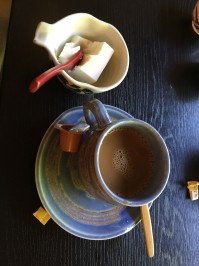
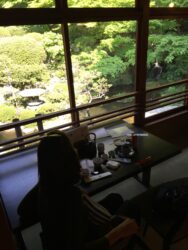
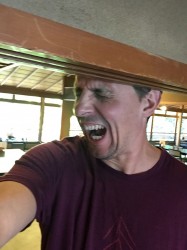
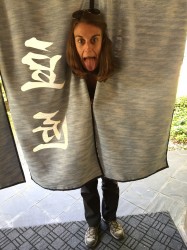
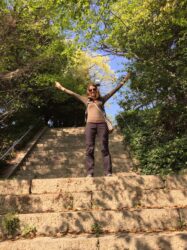
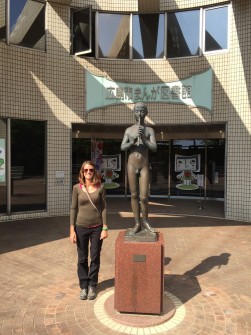
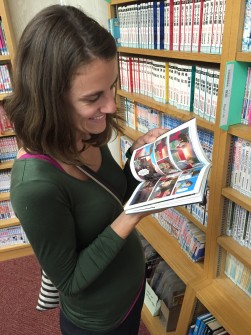
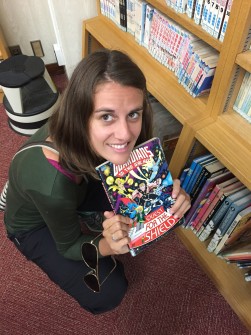
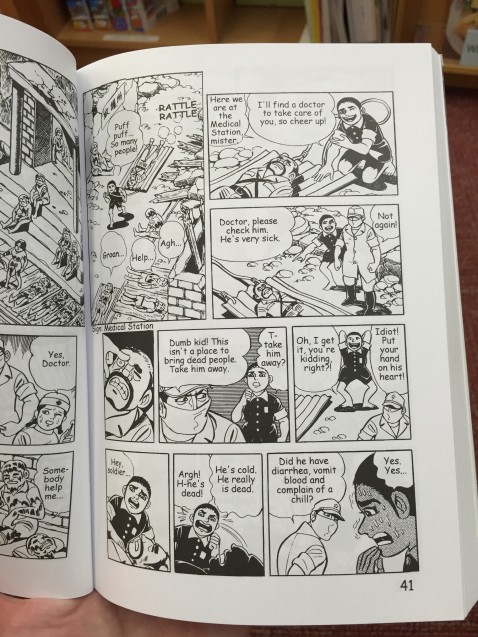
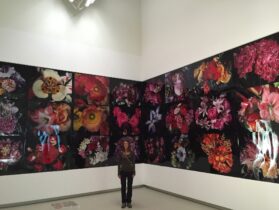
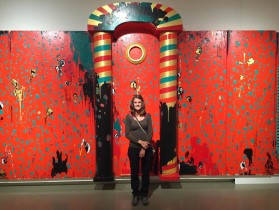
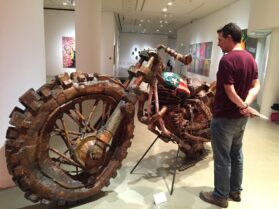
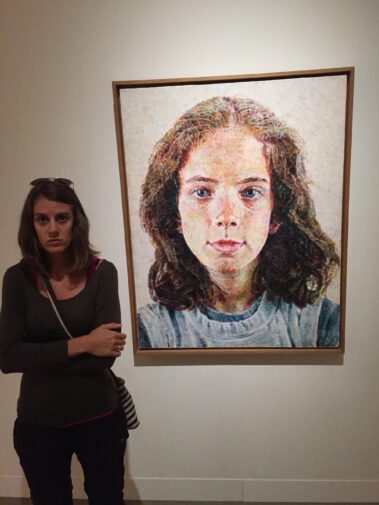
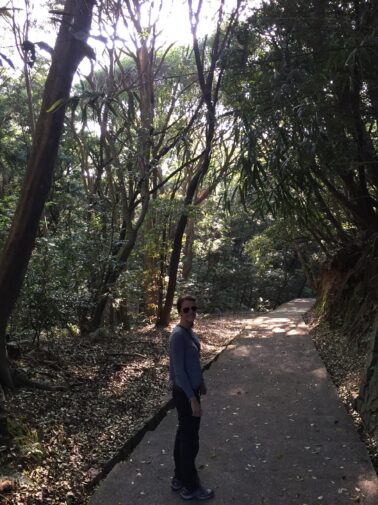
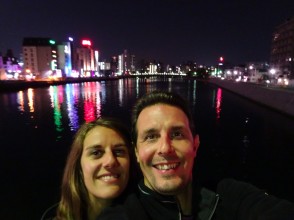
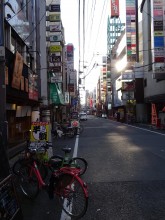
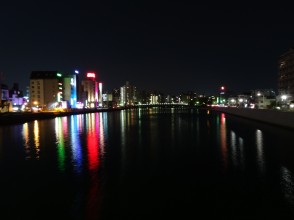
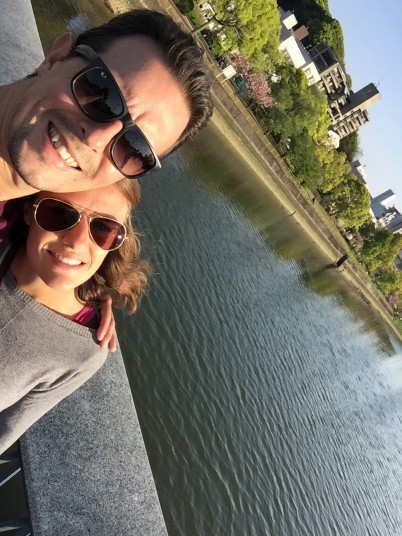
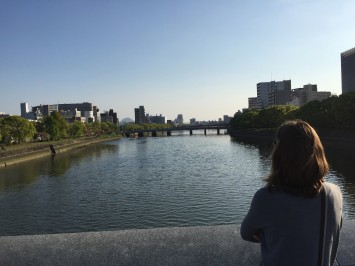
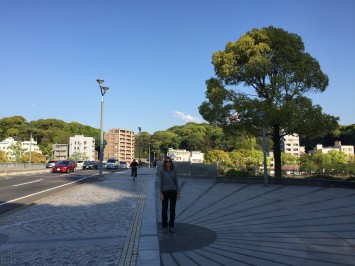
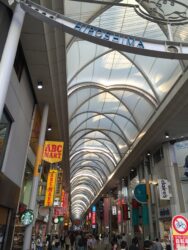
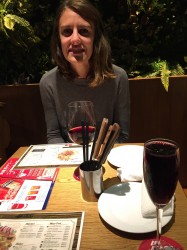
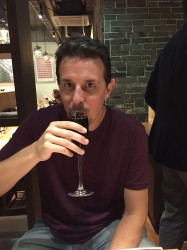
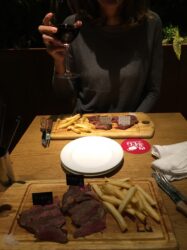
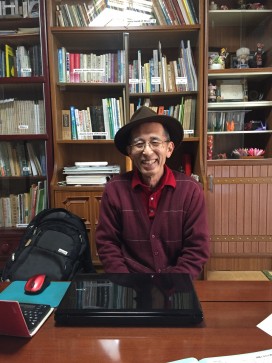
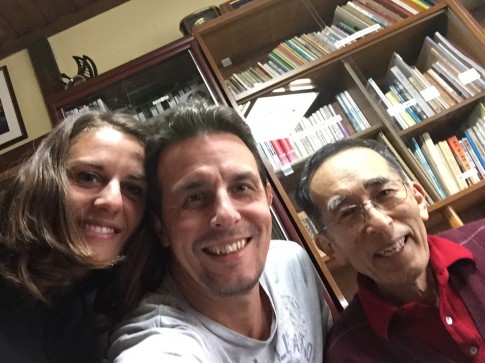
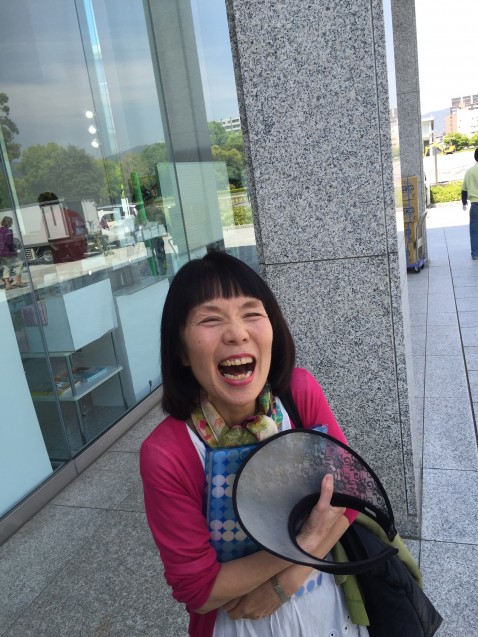
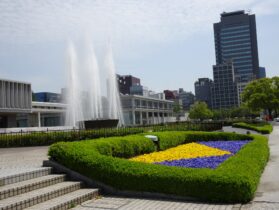
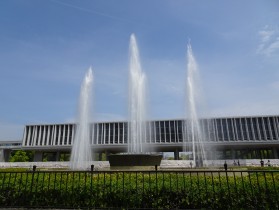
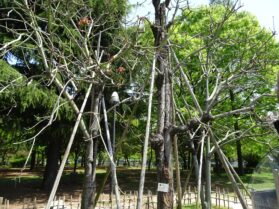
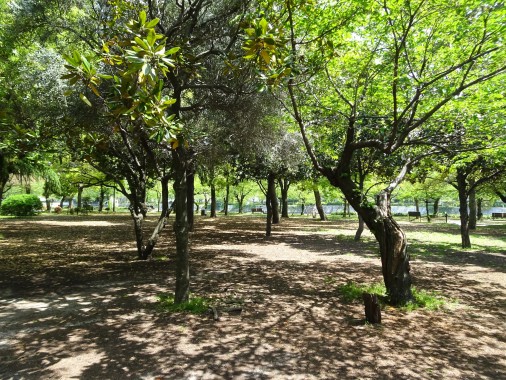
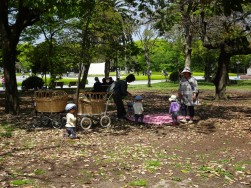
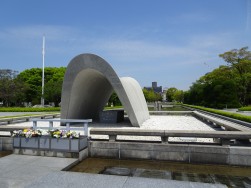
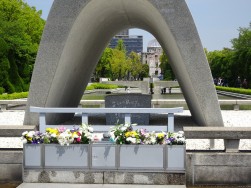
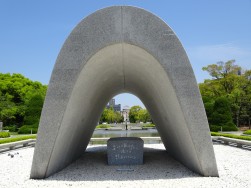
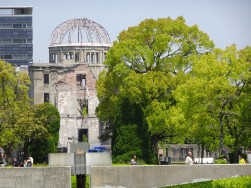
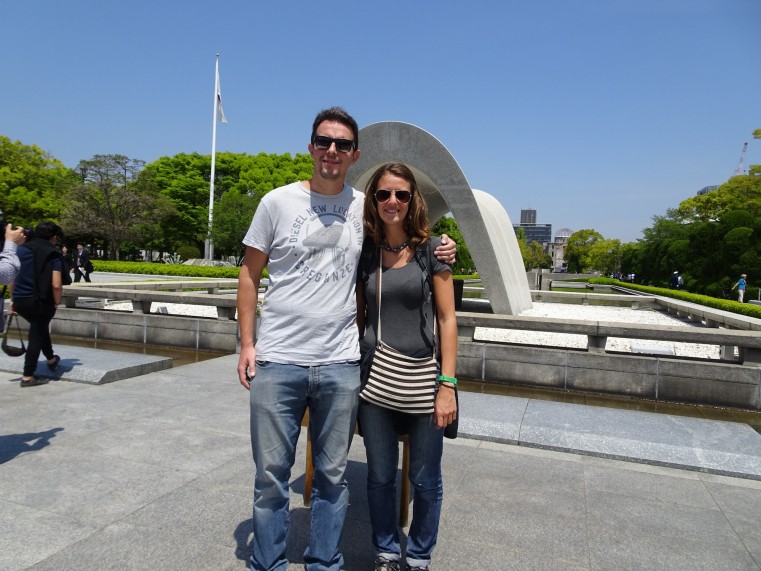
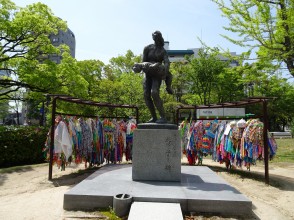
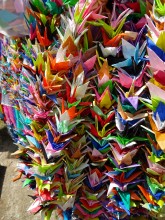
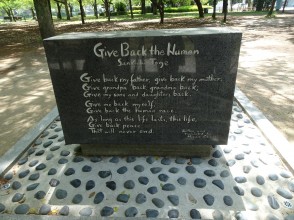
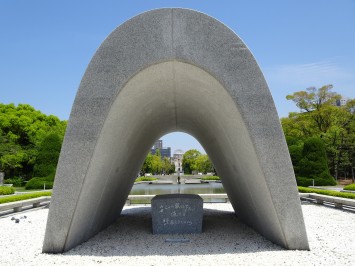
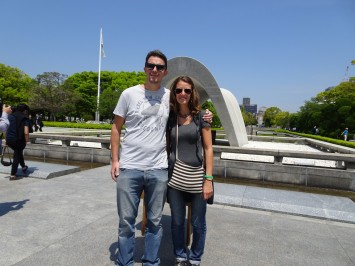
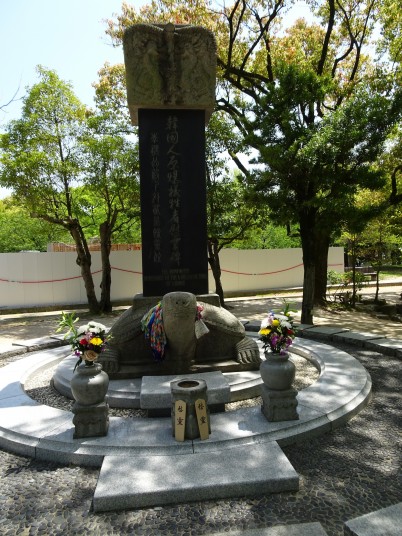
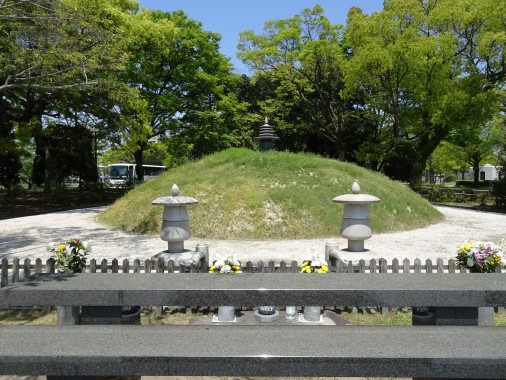
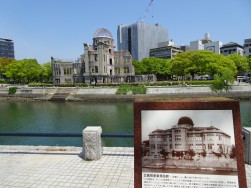
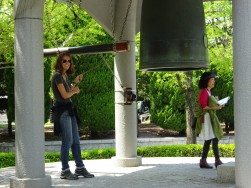
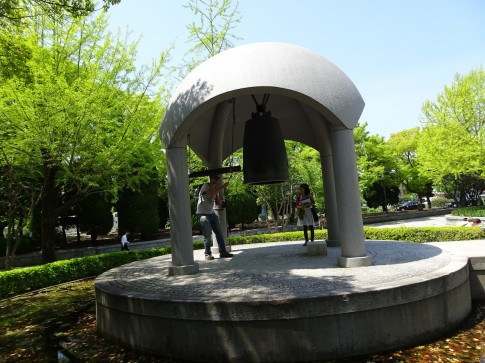
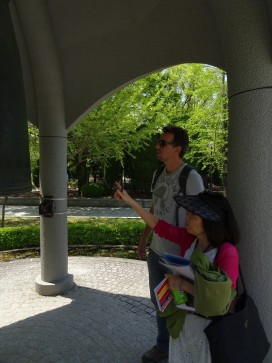
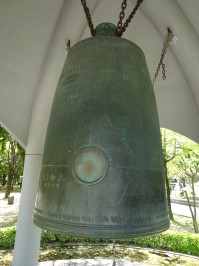
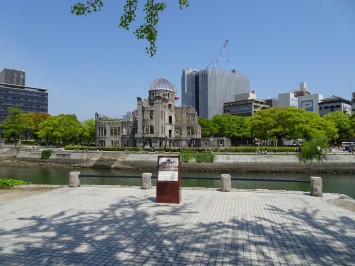
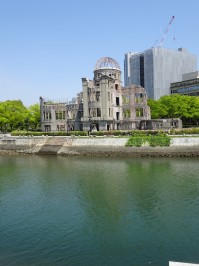
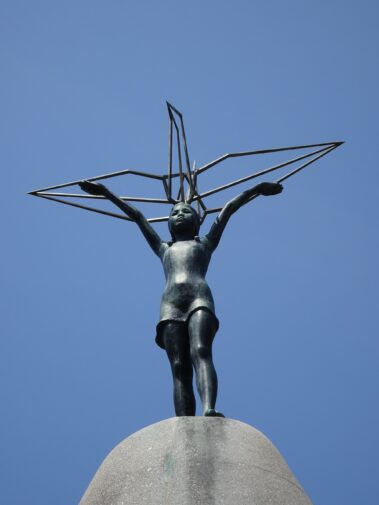
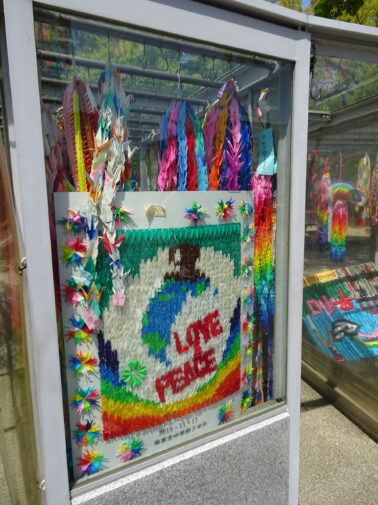
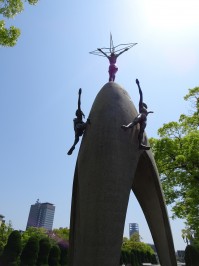
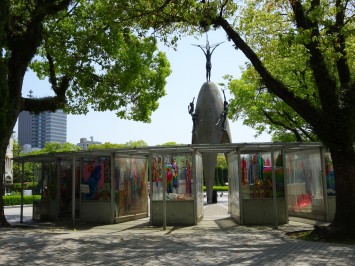
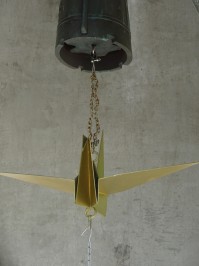
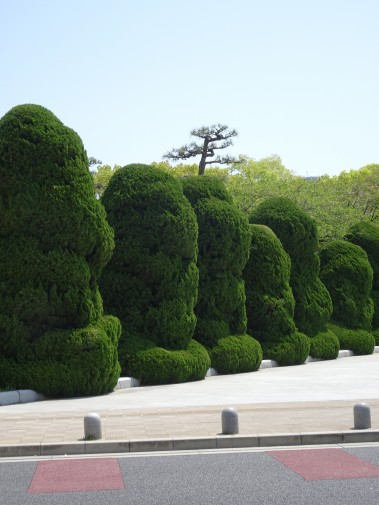
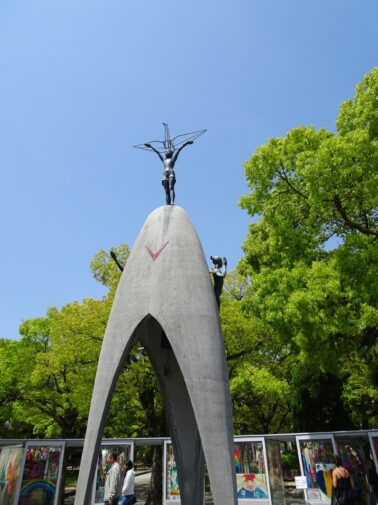
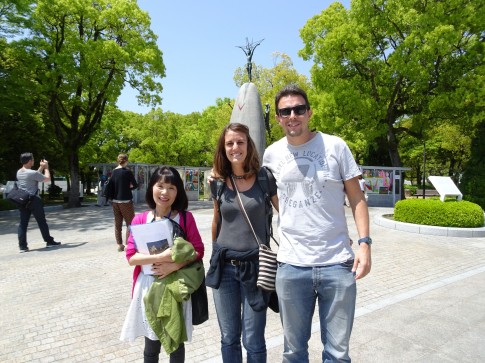
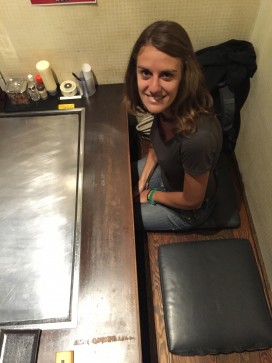
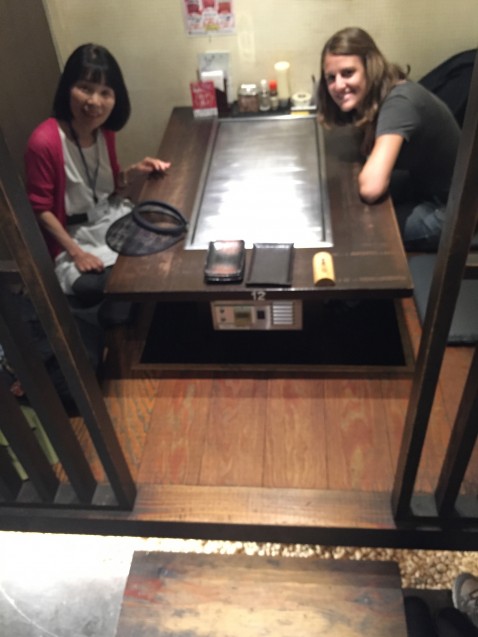
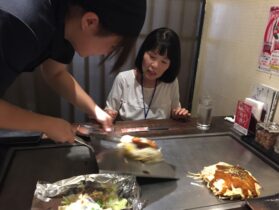
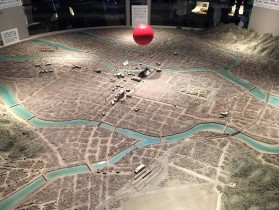
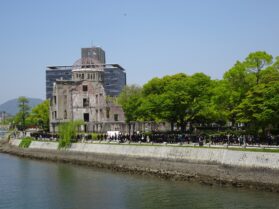
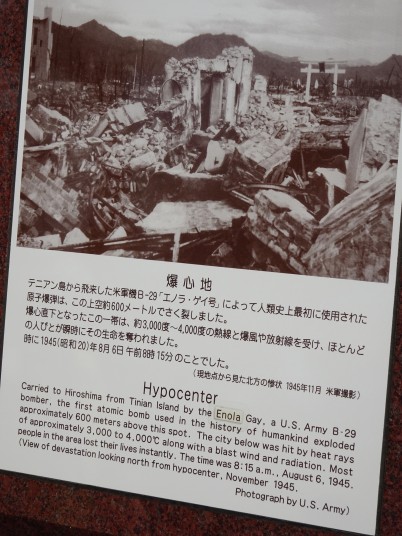
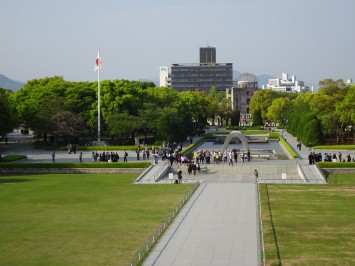
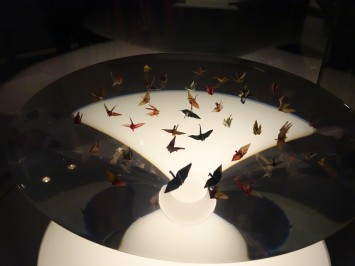
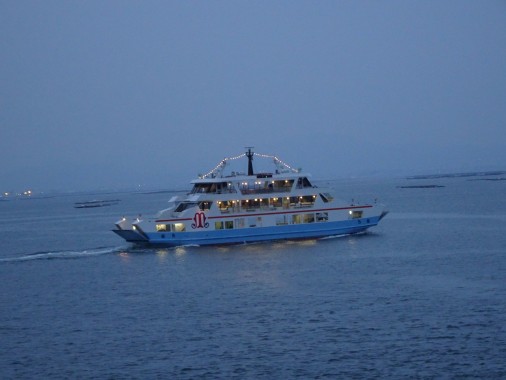
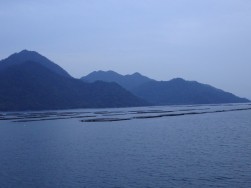
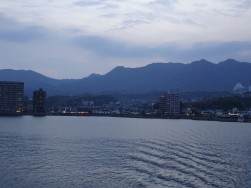
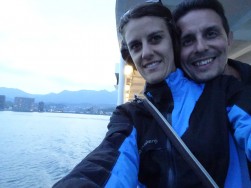
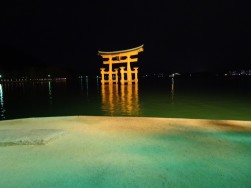
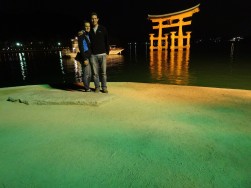
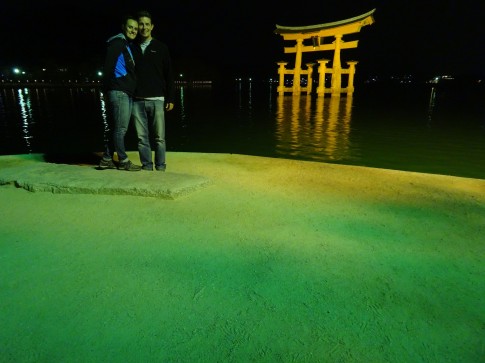
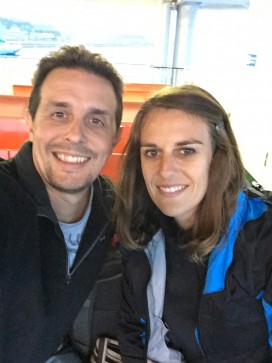
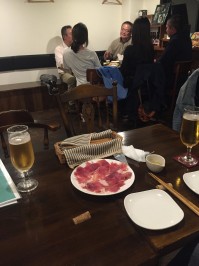
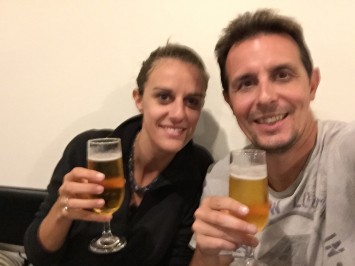
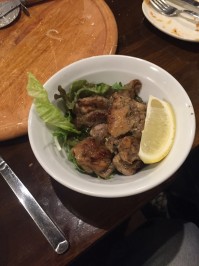
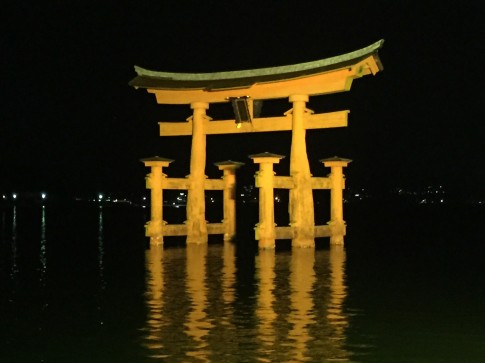
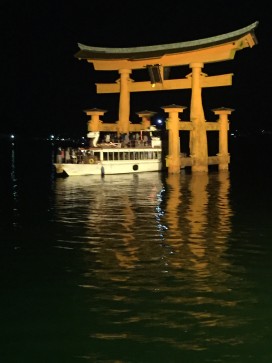
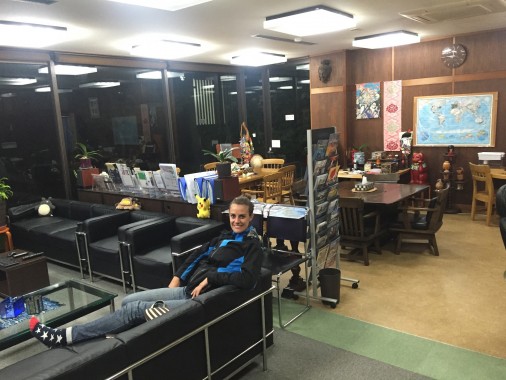
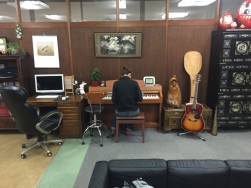
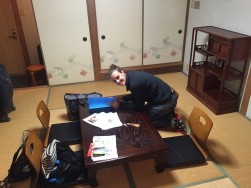
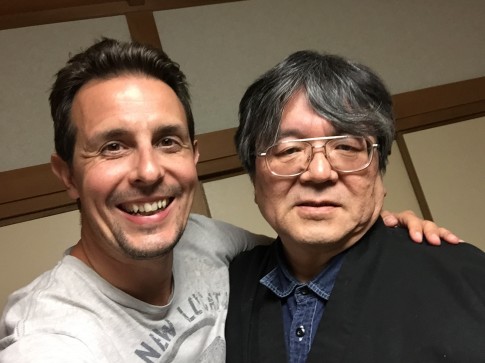
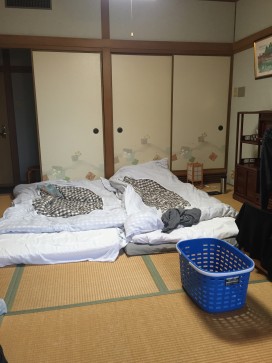
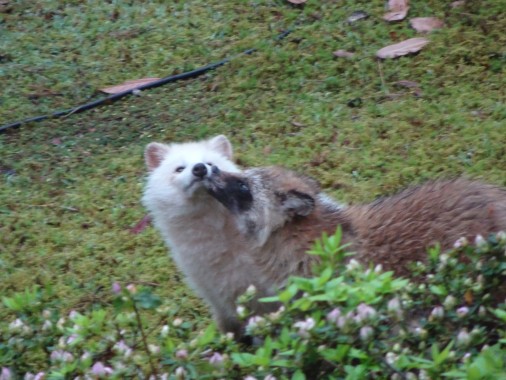
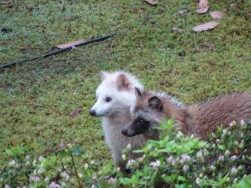
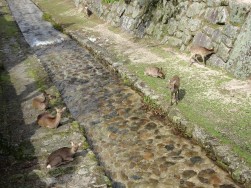
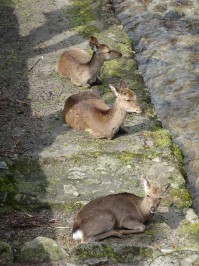
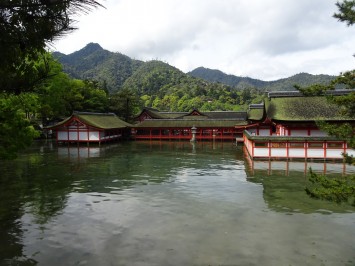
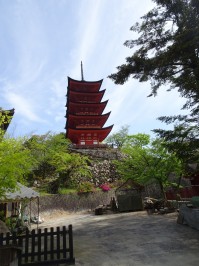
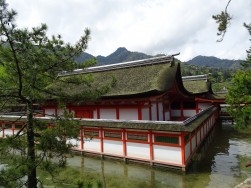
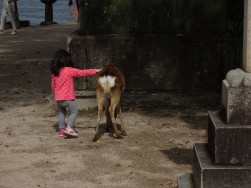
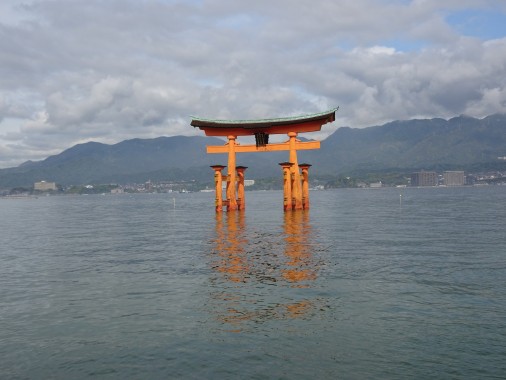
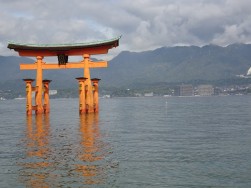
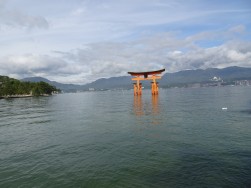
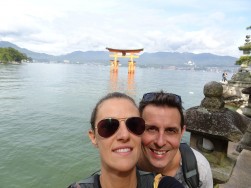
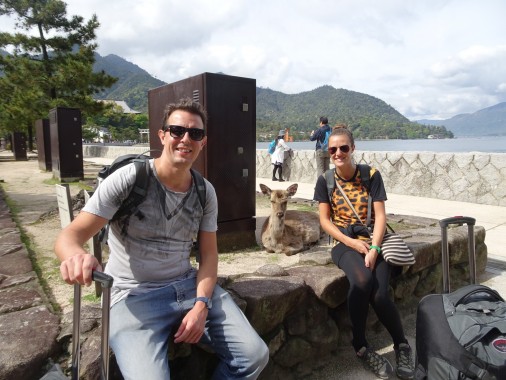
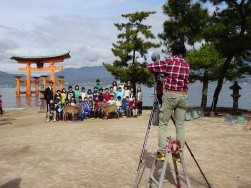
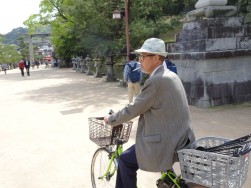
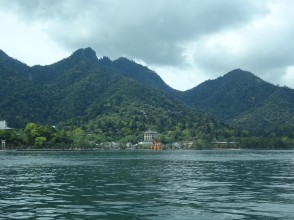
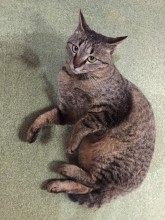
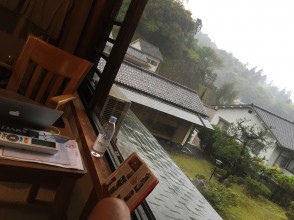
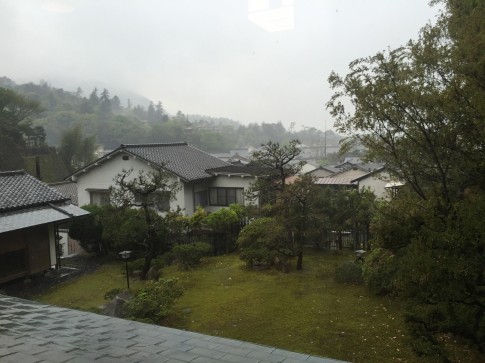
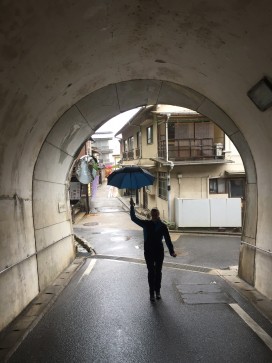
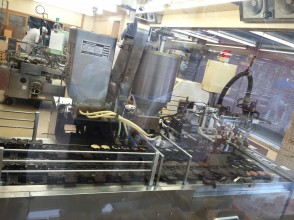
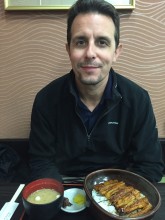
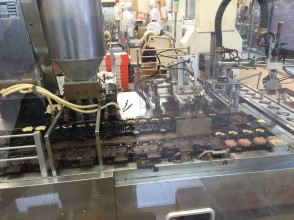
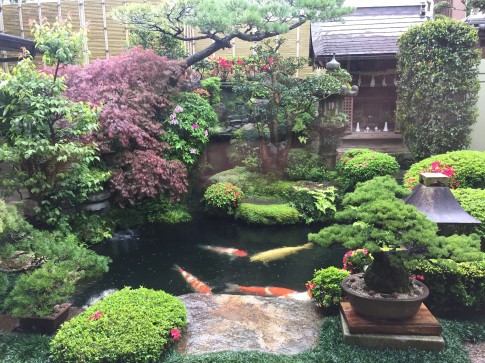
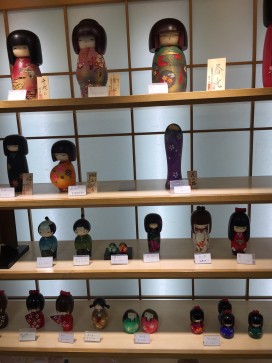
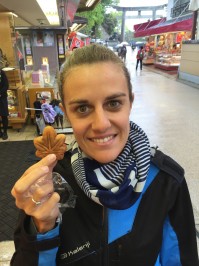
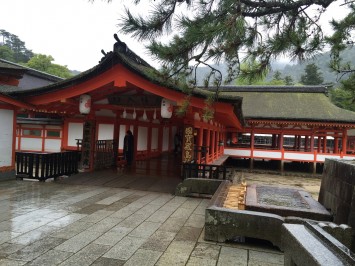
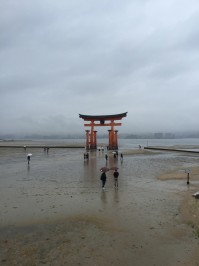
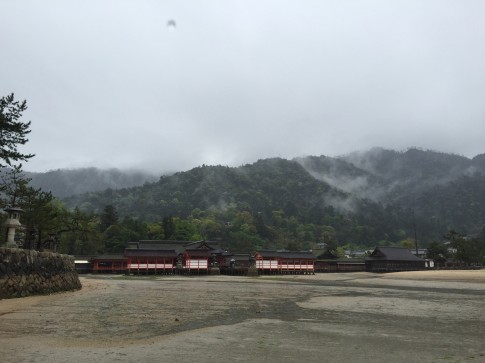
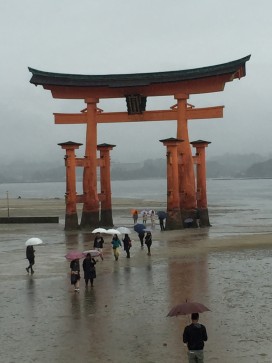
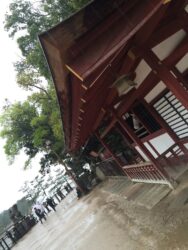
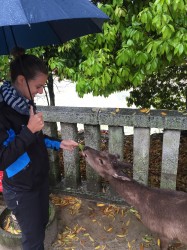
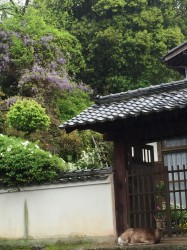
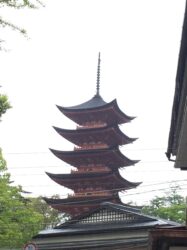
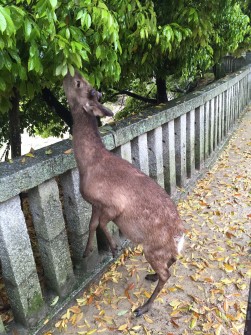
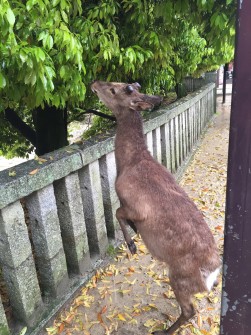
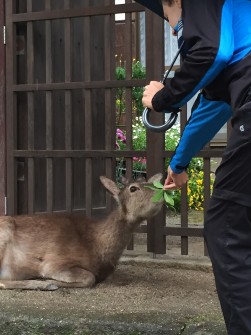
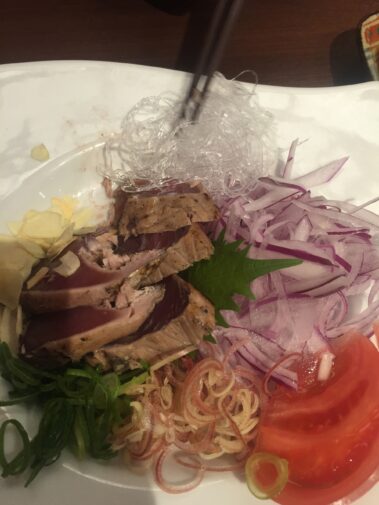
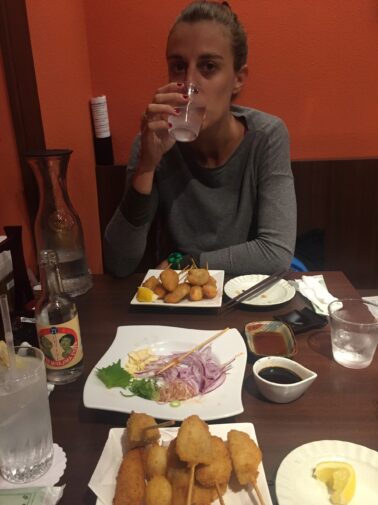





2 Comments